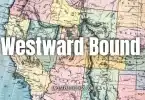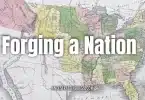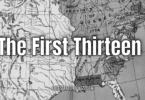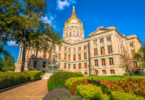Topeka is the capital city of the state of Kansas. It is also the county seat of Shawnee County. Located along the Kansas River, Topeka is a city of about 127,000 people and is part of a greater metropolitan area of about 233,000 people.
The Topeka name is from the Kansas-Osage Native American tribes and means “place where we dug potatoes.” It alternately means “a good place to dig potatoes.” The name Topeka was recorded for the first known time in 1826 as the name the Kansa Native American tribe gave to the Kansas River. The founders of Topeka chose this name as the official name of the city in 1855 because, according to them, it was “novel, of Indian origin, and euphonious of sound.”
A half Kansa tribe/half-white man named Joseph James is usually credited with suggesting the name Topeka for the city. The city was laid out on a map in 1854 and was established by eastern Abolitionists. It was a free city in a free state and founded right after the passage of the Kansas-Nebraska Bill. Topeka received its official city charter in 1857.
Topeka is the site of some important historical moments in American history. One of the most famous moments to take place there was the US Supreme Court case, Brown vs. Board of Education of Topeka. This landmark ruling overturned the Plessy vs. Ferguson ruling and declared that segregation by race in public schools was now illegal in the United States. There are three U.S. Navy ships named the USS Topeka after this important US city.
As for the history of Topeka, it was home to Native American tribes for thousands of years. In the 1500s to the mid-1700s, the Kingdom of France claimed ownership of the area that is now Topeka, along with much of North America. After the French and Indian War in the mid-1700s, France ceded most of its North American land to Spain in a secret treaty called the Treaty of Fontainebleau. Spain returned most of this land to France forty years later. The next year after Spain returned the land to France, the United States bought it from them in 1803, and this land included the land that is now Topeka.
Wagon trains made their way to Topeka in the 1840s, on their way west from Independence, Missouri on what became known as the Oregon Trail. Topeka was part of this trail. In Topeka at the time were three sisters who were half-Kansas Native American, and they were married to the Pappan brothers, who were a French-Canadian family. These three couples established a ferry service over the Kansas River at Topeka. This was the only way westward travelers could reliably cross the river, as there were not many other ways to cross in the area; anyone looking for another way would have had to travel hundreds or even thousands of miles out of their way to do it.
The traffic along the Oregon Trail in Topeka was supplemented the next decade by trade on the new military road leading from Fort Leavenworth. The road went through Topeka and ended at the new Fort Riley. In 1854, nine men built a cabin in Topeka and established the Topeka Town Association. A man named Cyrus Holliday was among the group, and was considered to be an “idea man.” He became the first mayor of Topeka and was the founder of the Atchison, Topeka, and Santa Fe Railroad.
After the establishment of the cabins at Topeka, steamboats began to dock at the Topeka landing. Once docked, they brought meat, flour, and lumber to the western frontier town. They then returned to the east with potatoes, wheat, and corn they obtained at Topeka. With such a healthy trade going on, Topeka was a thriving commercial hub by the time the Civil War ended, and it was able to offer its residents many of the highest technology comforts of the era.
The state capitol building, newly built in Topeka, was first used in 1869, after moving from Constitution Hall. Constitution Hall, which was located on South Kansas Avenue, was where abolitionists gathered in the mid-1850s to write the first of the state’s eventual four constitutions. Today, the National Park Service celebrates Constitution Hall in Topeka as the headquarters of the Lane Trail to Freedom on the Underground Railroad.
The growth of Topeka as a city slowed somewhat after a drought in 1860, and then the Civil War. But, it picked back up again after the war and kept pace with the other metropolitan cities in the area. The city thrived from 1865 to 1870, as it bounced back from its previous hardships. In the 1870s, lots of former slaves came to Topeka, settling on the east side of Lincoln Street between Munson and 12th Streets; these settlers called themselves the Exodusters. The area of the city where they settled was called Tennessee Town because so many of the Exodusters came from that state. The first African-American Kindergarten was established in Topeka in 1893 by Dr. Charles Sheldon, the pastor of the Central Congregational Church.
A college was established in Topeka in 1865 by a charter issue of the state of Kansas. It was called Lincoln College but is today known as Washburn University. The railroad that went from the east to Topeka moved westward toward new frontiers in the west in 1869. General offices and machine shops for the Atchison, Topeka, and Santa Fe Railroad were built in Topeka in 1878.
There was a housing boom in Topeka in the late 1880s, where investors speculated on housing lots in town. When the bubble burst in 1889, it ruined many of the investors. However, the population of the town doubled during the housing boom period, and most citizens were able to get through the localized financial depression of the 1890s just fine.
The automobile industry created another financial boom in Topeka in the early 20th century. The Smith Automobile Company made Topeka its home for a decade in the early 20th century. Topeka is a healthy, popular modern city today.







